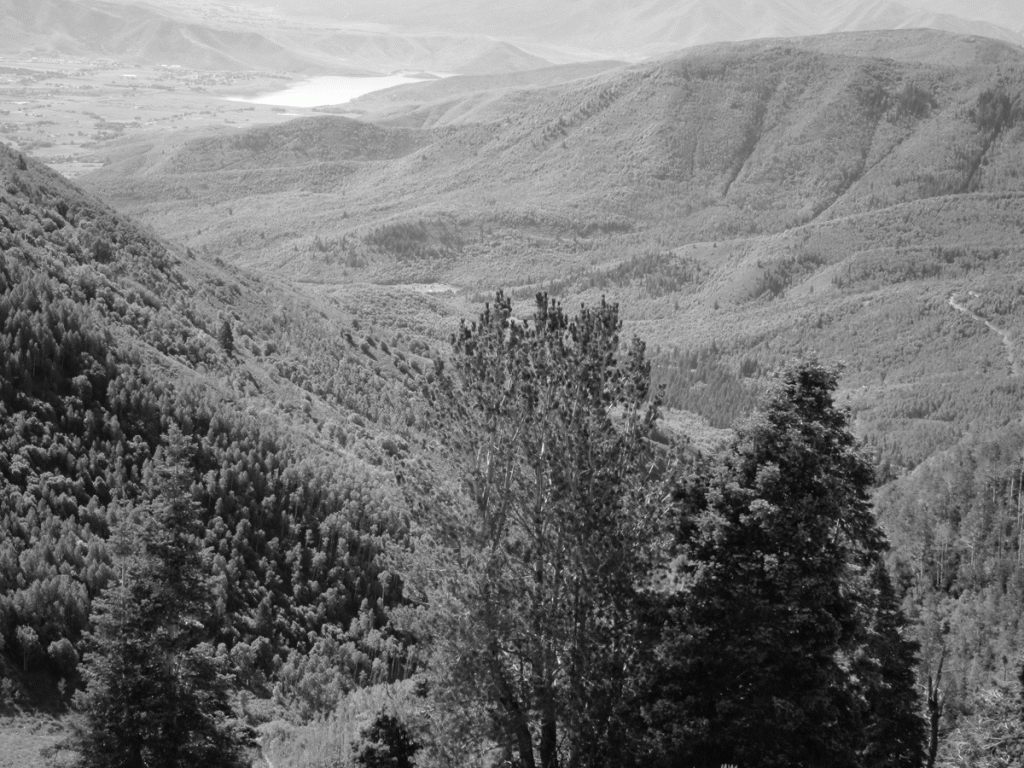Who owns the water in a drain tunnel dug by a mining company – the irrigation company with the rights to the river nearby, or the mining company under whose property the tunnel sits? The debate clouded the development of the Snake Creek Tunnel, constructed to drain and explore areas of the Daly-Judge mine and other nearby properties. The context of the struggle dates back to pioneer settlements in Heber Valley.
With an average of less than twelve inches of precipitation per year, Utah is the second driest state in the United States. Agriculture is only possible with irrigation. One of Heber Valley’s first significant community developments began in the summer of 1859 along Snake Creek in the northwest part of the valley. An abundance of warm springs in the area made the soil highly productive. Successful grain crops planted along Snake Creek stimulated the building of permanent cabins and corrals along both banks. In 1866, to better respond to various outside threats, settlers united and formed the community of Midway.
In order to transport water to their lands, farmers banded together in cooperative efforts to dig irrigation canals. Residents were asked to set aside “selfish interests” for the public good. To encourage cooperation, the territorial legislature appointed county probate judges to manage all local water rights. Water was regulated so that it benefited everyone.
Eventually disputes arose between individual needs and cooperative efforts. Midway farmers recognized that centralized control was necessary and organized an irrigation association in 1887. Seventy-four people attended the Midway Irrigation Company’s first meeting on May 4. It took a five-person committee of nearly a year to hammer out the articles of incorporation and by-laws, adopted unanimously on March 30, 1888.
Under appropriation doctrine in western water rights law, the Midway Irrigation Company acquired priority rights to the waters of Snake Creek by being the first to divert the water for irrigation and other reasonable uses.
Percolating water was first encountered in Snake Creek Tunnel in January 1911 – less than a year after construction began – some 2,684 feet from the portal. The water was permitted to flow into Snake Creek, a tributary of the Provo River. By spring 1914, the face of the tunnel was 8,000 feet from the portal and a considerable flow of over 4,000 gallons of water per minute had developed. The Snake Creek Mining and Tunnel Company arranged to sell its water rights to Provo Reservoir Company for irrigation purposes.
In turn, the Midway Irrigation Company “jumped” the mining company’s claim and diverted the water for its own irrigation purposes, thus depriving the Provo Reservoir Company use of the water. The Midway company alleged that for more than 25 years they had owned the waters of Snake Creek by appropriation. The Snake Creek Mining and Tunnel Company asked the United States District Court for an injunction against the irrigation company. After lengthy argument, the case was taken under advisement by Judge William Hays Pope.

Credit: Park City Historical Society and Museum
Come back next week to learn about the case and its journey to the US Supreme Court.